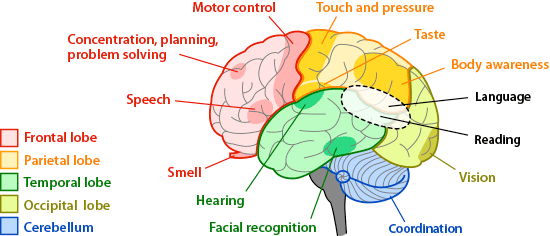
Dialogue Attribution
Characters in fiction writing often speak―let’s face it, a story would feel strange if the characters never said a word to one another. However, just throwing dialogue down on a page soon becomes a chaotic mess. Authors have a number of techniques at their disposal to control dialogue and keep the reader from getting lost and confused. In the course of reading, editing, and proofreading, I seem to find issues with dialogue mechanics that stand out as a little iffy at best and downright distracting at worst. In a spell of attempting to be all helpful and stuff again, I decided to ramble a bit about dialogue attribution.
— Tags, Beats, and Cues —
Feel free to skip this part if you know the difference between a dialogue tag and a beat. If not, read on! There are three primary means of dialog attribution. Simply put, this means telling the reader who said what. Overreliance on any single technique makes for weak writing. Good dialogue should use a mixture so as not to create a feeling of repetition.
Dialogue Tags
A dialogue tag (also known as a ‘saidism’) in its most basic form is the word ‘said.’ Many authors regard ‘said’ as invisible to the reader and as the ideal, perfect, only tag anyone should ever use (with the occasional permission slip granted to ‘asked’). Dialogue tags may also include other words such as yelled, shouted, whispered etc, and are separated from the dialogue by a comma.
Tags can be in front of, behind, or amid the dialogue:
“Meet me at the wharf at six,” said Nigel.
Faye said, “Six? Isn’t that a bit early?”
“Hardly,” said Nigel. “Lassiter wanted us here at five. I managed to talk an hour out of him.”
Dialogue Beats
A beat is an action occurring on the same line as dialogue, used to attribute that dialogue to a particular character much like a tag. Beats offer a way to connect a line of dialogue to a character with a sense of flow, especially when you’re looking to convey a sense of the dialogue occuring while action happens. Beats should be separated from dialogue with periods, can occur at the beginning of dialogue, between bits of dialogue, or after:
Nigel rolled down the driver-side window. “Oh, bloody… I don’t like the look of that mist.”
“Neither do I.” Faye shuddered, clutching her silver derringer close to her chest. “Something’s wrong.”
“Too late now. We’re past the point of no return and all that.” Nigel opened the door and got out.
Context Attribution
The third method of dialogue attribution is contextual. A contextual attribution connects the dialogue to the character speaking it by the context of what is going on around the dialogue or by the words themselves.
Examples of context tagging include:
- Characters with a distinctive, recognizable speech pattern/accent (the reader will know which character says something if there’s only one character that talks like that). In this example (From Emma and the Banderwigh) the second line of dialogue has an elongated ‘s’ sound, which is a speech attribute of a specific character. Only one character in the book speaks with the ‘s’ sounds elongated, so any line of dialogue with this in it can be context attributed to that character.
She struggled to unstick her finger, and pointed at the dead man two feet away. “What about him?”
“Hisss companion killed one of my children.”
- Direct responses to questions, either when a character is addressed by name or if there are only two characters present in the scene.
“What time did Doctor Lassiter say he was going to be here?” asked Faye.
“Six-thirty.”
(Assuming that Nigel and Faye are the only characters in the scene, the answer to the question is assumed to be from Nigel. If the answer is intended to come from the extra-dimensional being in the glove box, you’d need to identify that.)
or
“You never did tell me what her name was, Nigel.”
“Would it have mattered?”
Here, the question is directed at Nigel by name. The answer logically comes from Nigel so there’s no need to tag it apart from the context.
- Dialogue that only one character in a scene could possibly say and would not make sense coming from anyone else. This example is from Prophet of the Badlands. Althea, the main character, has found a malfunctioning android stuck in a creek and is having a conversation with it. The line that begins with “prophet not found” has a speech pattern (short, direct statements plus it ‘sounds’ like a machine talking.) Also, Althea’s mangling of English can also serve as a context tag.
She noticed the gun closer to the water did not spin as fast as the other did, though both still pointed at her. “You want me to help you so you can shoot me?”
“That is correct.”
With a confused face, she ventured a peek. “Why? I am the Prophet.”
“Prophet not found. You are biological contaminant. CRP directive implies removal of biological contaminants from central North America. Please move to within twenty four inches of main unit.”
She stepped out from behind the tree, still clinging to it. “You want me to get closer? Why?”
“Please move within twenty four inches of main unit. Auxiliary contaminant removal system has a maximum effective range of twenty-nine inches.”
She took a cautious step closer. “What is a auximarry taminant system?”
Althea jumped back as a twenty-nine inch blade sprang out of its chest and waved back and forth in the air. “Detachment of biological unit component ‘head’ will result in effective contaminant removal.”
In a nutshell, if the reader can tell who is speaking a line of dialogue by the content or the way in which it is said, that dialogue is using context attribution.
— Missteps (Double tags, repetitive tags, and bad tags) —
Many new authors seem to have a desire to avoid using ‘said’ at all costs. I’ve worked with some manuscripts where the writer went to great and sometimes awkward lengths to avoid using ‘said.’ While I agree that long patches of dialogue where every line has a ‘said’ is dry as hell, there are some things that should be avoided.
Double Tagging
A double tag occurs when dialogue is attributed twice. The most often situation is when a writer uses both a beat and a tag on the same piece of dialogue. As the purpose of tagging and beats are to attribute the dialogue to the speaker, more than one of them is redundant and unnecessary.
An example of a double tag:
Nigel reached into his coat and grabbed his Webley revolver. “Wait in the car, Faye. This is going to get nasty,” he said.
Here, the dialogue is attributed to Nigel by his going for a gun. the ‘he said’ at the end is useless.
I’ve sometimes even seen triple and quadruple tags where ‘he said’ or ‘she said’ is used as a reflexive add-on to the end of every spoken line of dialogue. Until the paragraph changes, the dialogue all belongs to the same character. A section of dialogue only needs to be attributed once. Something like this is going too far:
Faye leapt from the car and scrambled through the fog by the headlamps. “Nigel?” she asked. “Nigel? Come back,” said Faye. She crept towards the roiling wall of mist where he’d vanished. An hour ago, she’d wanted to kill him―now, she couldn’t imagine losing him. “Nigel!” she screamed. “Where are you?”
In this example, there’s 4 tags: the initial beat, asked, said, and screamed. While the screaming tag conveys some additional descriptive elements and might be tolerable, the asked/said are needless since the paragraph starts off with a beat. The above could be rewritten with one tag as:
Faye leapt from the car and scrambled through the fog by the headlamps. “Nigel?” She paused, listening. “Nigel? Come back.” She crept towards the roiling wall of mist where he’d vanished. An hour ago, she’d wanted to kill him―now, she couldn’t imagine losing him. “Nigel! Nigel, where are you?”
Only the sound of her own frantic screaming returned from the fog.
Bad / Explanatory Dialogue Tags
In the earnest efforts of some writers to avoid using ‘said’ as a dialogue tag, I’ve seen a lot of inventive verbs used as tags. Alas, most of them don’t do well. There are two primary forms of ‘bad tags.’ The first are verbs that do not convey speech and are not dialogue tags. Examples of this would be ‘laughed’, ‘chuckled’ or ‘sighed’ – all three of those are physical actions that are not speaking. More grotesque examples are physical actions such as winced or cringed. Using verbs like these as dialogue tags are clumsy as wincing or cringing (or any other physical action verb) isn’t a mode of speech. People don’t ‘wince’ words. So [“Ouch,” he winced.] does not work.
The second form of bad tag is what I refer to as ‘explanatory’ dialogue tags. With these, (many of which also don’t work as tags because they are not ways to speak) the author attempts to use the tag to explain the meaning of the dialogue to the reader. These tags can vary in impression from seeming amateurish to insulting the reader’s intelligence depending on how the reader takes them. Let the dialogue speak for itself and resist the urge to explain. Examples of ‘explanatory tags’ are:
“Yes, let’s do that,” he agreed.
“We have to shut down these sub relay breakers first, then we can kill the main. Once it’s off, we can change all these light bulbs,” he explained.
“I think this is an awful idea,” he opined.
“I hate this place. I hate this food. I hate this stupid dress, and I hate you!” she complained.
“No way,” he replied.
When a writer thinks the reader needs to be told ‘Yes, let’s do that’ is agreement – it’s like they grab the reader by the ear and force their face up to the page, yelling, “See, he agreed! see! ‘Yes means I agree!” A description of how to change light bulbs is obvious as an explanation, using the tag ‘explained’ here is redundant. Also, you can’t ‘explain’ words, it’s not a mode of speech.
With the ‘opined’ tag, the dialogue is expressing an opinion already. The tag ‘opined’ is unnecessary.
In the last example, the character is complaining. The dialogue shows that. There’s no need to beat the reader over the head to make sure they understand that a string of ‘I hates’ is complaining.
“Replied” sits on the fence. Some people find it acceptable, while it often strikes me as a weak tag. If the dialogue tagged with ‘replied’ occurs right after a question, its presence alone constitutes a reply – there’s no need to tell the reader it’s a reply when it is already shown as a reply.
Rote Tags
Many editors believe that ‘said’ is the only true dialogue tag. There is a lot of precedent for this, but some writers can take this too far. When every line of dialogue has a ‘said’ on it, the text is repetitious and stale, and not a lot of fun to read.
“I don’t care what this thing is, I’m going to send it back,” said Nigel.
“But, it’ll kill you,” said Faye. “Even if you live, you… won’t be the same.”
“Look,” said Nigel. “You don’t have to follow me if you don’t want to. This is Lassiter’s mess. He opened the gate, and I’m going to close it.”
“I’m going with you,” said Faye.
“No way in hell, babe,” said Nigel. “You’re staying right here.
“I’m not letting you go alone. Besides, I have the amulet,” said Faye.
Here, every line has ‘said’ on it. As you can see, it reads like you’re falling down the stairs face first and cheek-slapping every step along the way. The supposedly innocuous ‘said’ becomes not so invisible.
Good tags
So what, you may be asking now, do I think are good tags? Tags that convey a descriptive element and do not attempt to explain or clarify the dialogue. I have worked with a number of editors, some of whom have been strict “use ‘said’ or don’t use anything!” whack you on the knuckles with the ruler types, and others who seemed not to care whatsoever what tags are used. Some would argue the ideal dialogue uses only ‘said’ and ‘asked’ interspersed with beats and context clues.
While ‘said’ is the most accepted tag, it’s also bad to overuse it (see rote tags above). When the need arises to use something else, consider words like: shouted, whispered, yelled, rasped, wheezed, and so on. Be careful to avoid words like ‘growled’ or ‘sighed’, which are sounds/actions unto themselves and not modes of projecting words.
The best dialogue mechanics use a mixture of beats, tags, and context clues to keep the reader immersed and the action flowing. Be wary of overusing the same words, and when in doubt, use ‘said.’
Happy Writing,
-Matt
** Thanks to Richard Roberts for feedback 🙂











